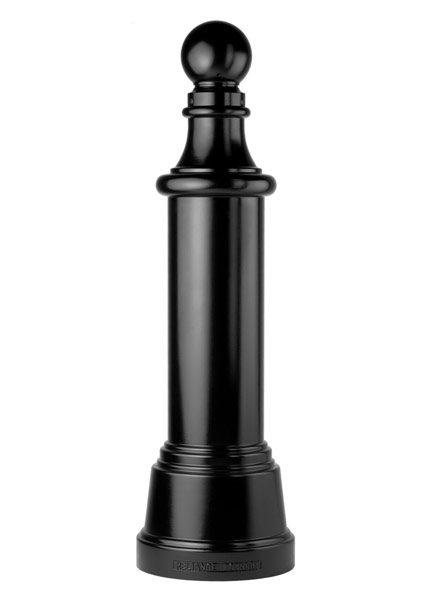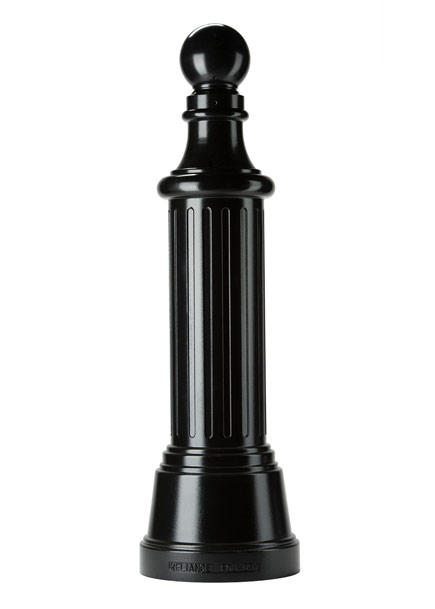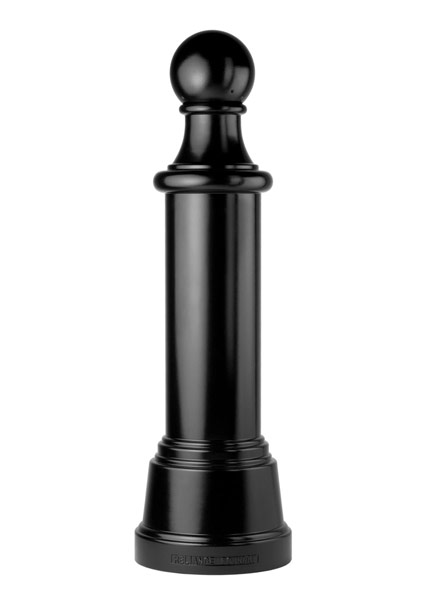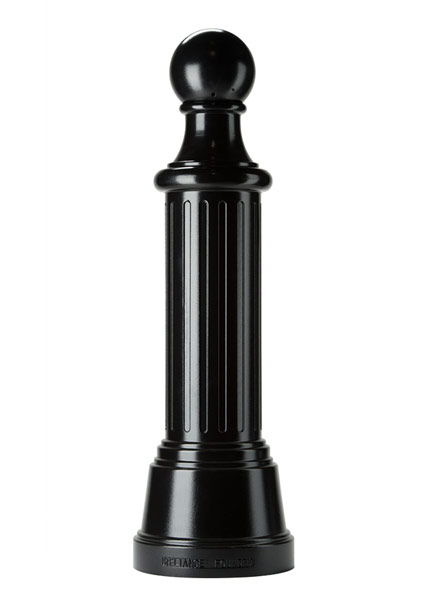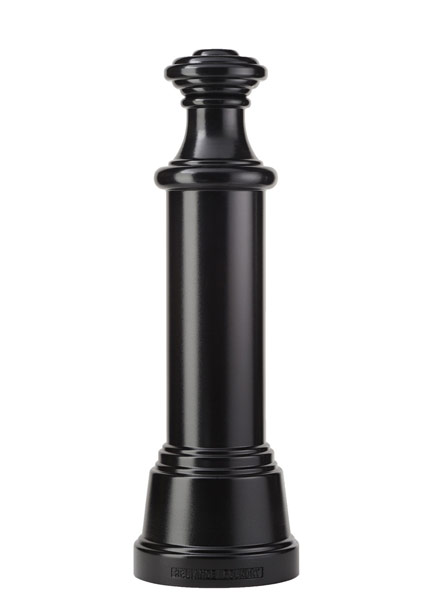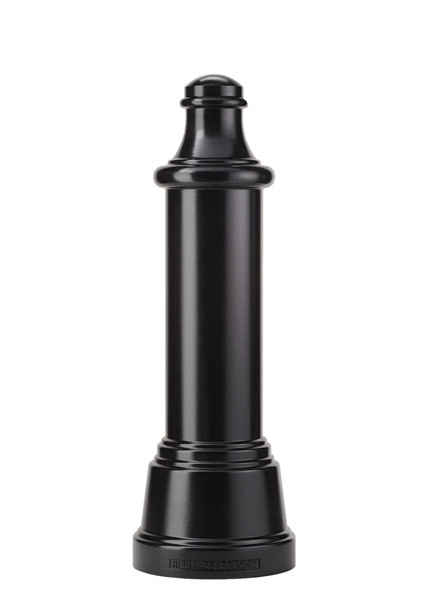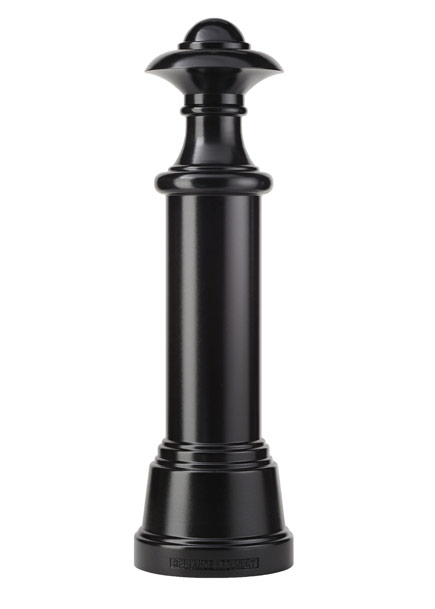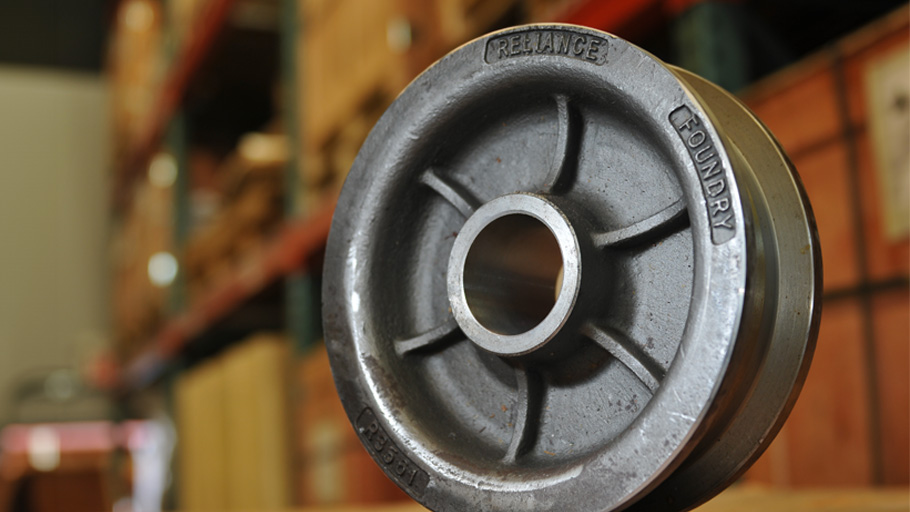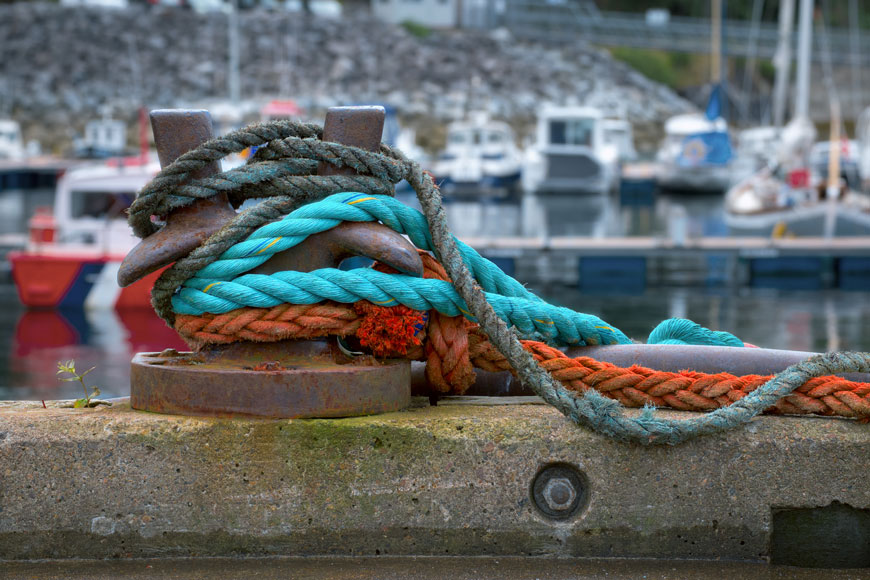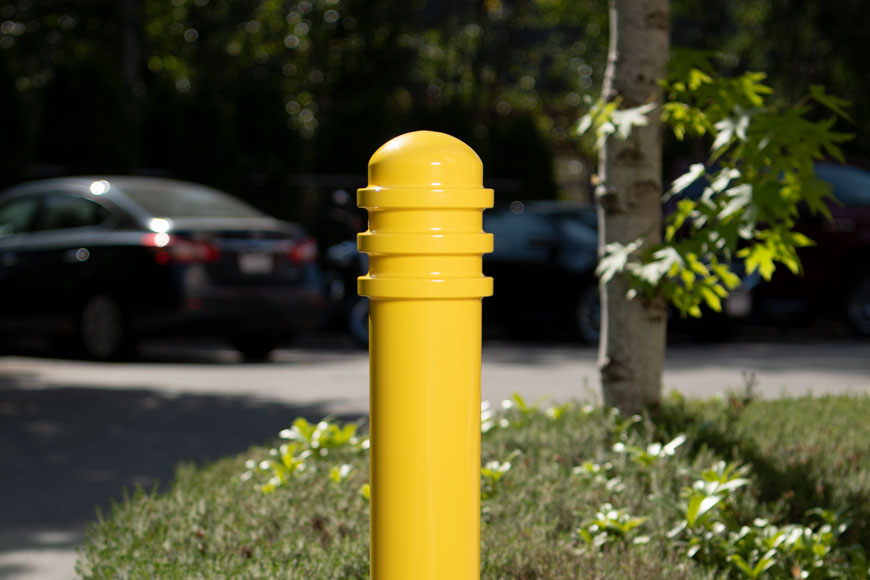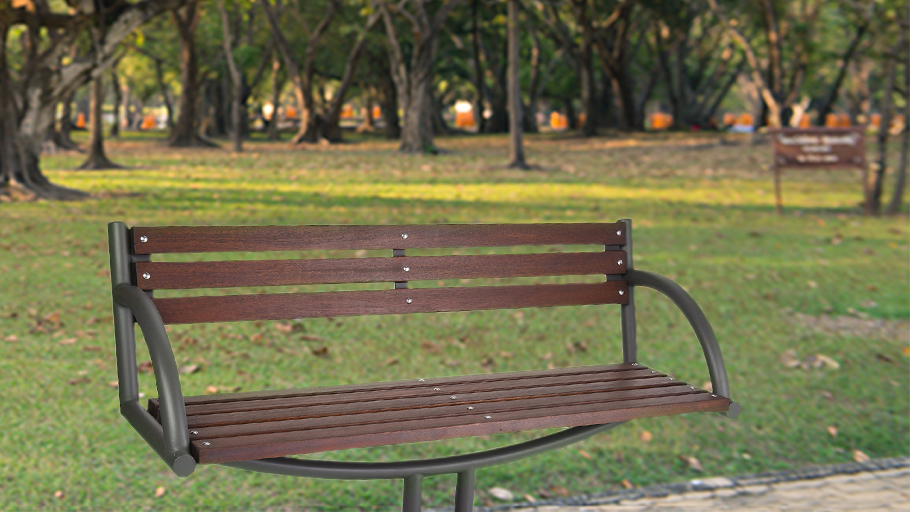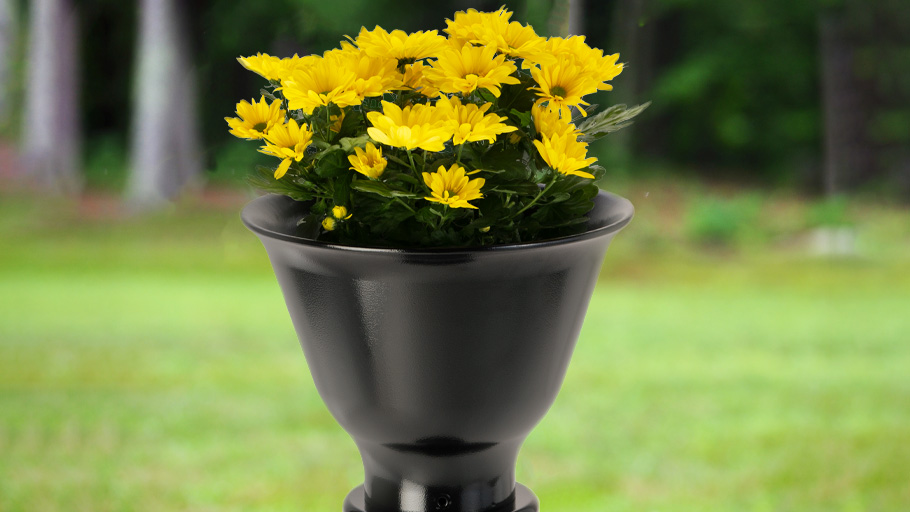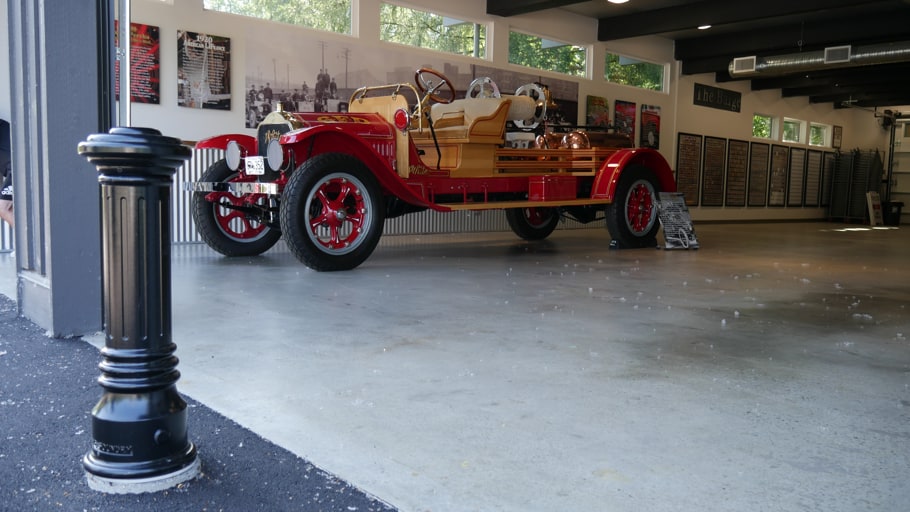A bit of architectural history in your protective perimeter
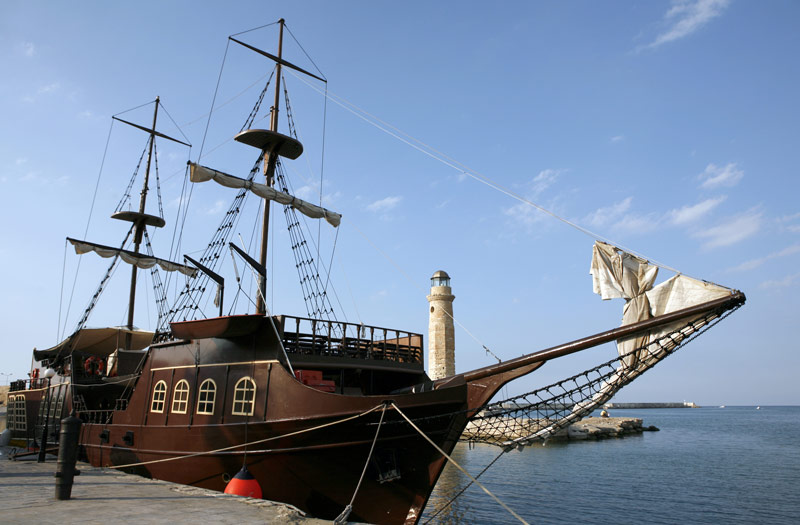
What do bollards have to do with cannons?
A lot, it turns out. Although horse hitches, way-finding markers, and marine mooring posts have been used for thousands of years, cast iron bollards were popularized in the 18th century.
A wartime practice arose of using spent or captured cannons as perimeter markers. When enemies were defeated, captured armament was used to mark the line of advance. Decommissioned cannons were used by the navy as mooring bollards, usually buried muzzle down, with the trunnions used to tie mooring lines.
Buried cannons offered solid cast iron construction and an attractive shape, and they were a symbol of military victory. Plus, they were readily repurposed. Architects and site planners took notice. They began to bring cannons into cities for a variety of jobs, like protecting stonework from carriage wheels, flanking walks, or marking the outside of grand perimeters.
Eventually, smaller bollards were cast for marking and protection. England, in particular, saw the widespread adoption of bollards in many styles. However, the classic cannon bollard had made an impression on decorative and architectural styles.
In the modern day, cannon-inspired bollards are still popular. They’re hefty and tall, and are excellent decorative covers for security or crash-rated interior pipe. They’re popular around buildings, especially those in classical architectural styles, as perimeter marker and a symbol of strength.
Anatomy of a cannon
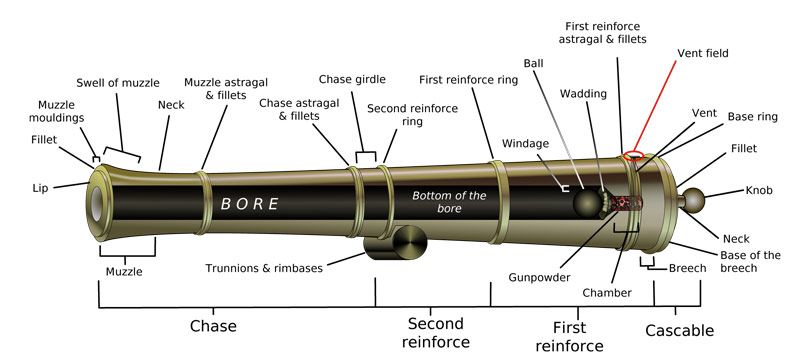
Looking at the parts of the cannon, we can see the parts of a cannon that have translated to the visual elements of the bollard. The knob, astragal & fillets, reinforce rings, and trunnions all may feature in a cannon bollard design.
Trunnions are re-interpreted in modern bollards. At the wharf, the projections on either side of the cannon are a helpful tying spot for mooring lines. Inland they’re not so useful. In the olden days they might capture carriage wheels and today are more of a hazard for pedestrians. Although trunnions are often outmoded, when chain-links are strung between bollards they offer the look of trunnion-and-mooring line.
Some cannons were buried muzzle down, and others muzzle up. When up, the bore was usually sealed using an oversized cannonball. Muzzle down meant the knob of the cannon was the decorative finial to the bollard. In both instances a sphere was a prominent top. Spherical caps, both raised and flush, are common with bollards of all sizes today.
Bollard Stats:
- Height: 53-3/4 in
- Body Diameter: 9-1/2 in
- Base Diameter: 16 in
- Weight: 259 lbs
- Material: Ductile Iron
- Maximum Interior Pipe
- Height: 36 in
- Diameter: 8 in
The R-7593 is the most classic cannon bollard, stylized for modern use. The body and base form the basic shape of all cannon bollards. An exaggerated flange on the base helps keep the bollard looking more like new, creating a wider footprint that keeps the body less vulnerable to dings and scrapes.
For strength and maximum interior space, the body doesn’t narrow the way a cannon bore might. In this model the body is smooth. The common reinforce ring in the center of the bollard is echoed near the bottom flange.
The top of the bollard echoes the first reinforce, base ring, fillet, neck, and knob of the cannon.
R-7584: The classic cannon, with fluting
Bollard Stats:
- Height: 53-3/4 in
- Body Diameter: 9-1/2 in
- Base Diameter: 16 in
- Weight: 200 lbs
- Material: Ductile Iron
- Maximum Interior Pipe
- Height: 36 in
- Diameter: 8 in
The R-7584 echoes the classic bollard, but has fluting along the body.
Fluting would not have been used on cannons. However, fluted Doric columns were very common around colonnades. When cannon bollards began being used to line pathways and walks, the two combined in people’s minds.
Flanges at the base of bollards look a bit like a column’s plinth, and the cap offers a finish that would be missing on stand-alone columns.
R-7595: A muzzle-down profile with a cannonball cap
Bollard Stats:
- Height: 52-1/2 in
- Body Diameter: 9-1/2 in
- Base Diameter: 16 in
- Weight: 256 lbs
- Material: Ductile Iron
- Maximum Interior Pipe
- Height: 36 in
- Diameter: 8 in
Muzzle-up cannon bollards would not have the same “neck” as muzzle-down, but they would generally be larger at the foot than at the top of the bore. A large diameter bottom is seen on most modern cannon bollard types.
Commonly, muzzle-up cannons were topped with an oversized cannonball to seal the bore from debris and water. The R-7595 echoes the shape of these tops.
The spherical cap is larger. It sits on the muzzle rather than being raised on a neck, giving the impression it sinks a little into the top of the bollard.
R-7585: Cannonball cap, with fluting
Bollard Stats:
- Height: 52-1/2 in
- Body Diameter: 9-1/2 in
- Base Diameter: 16 in
- Weight: 200 lbs
- Material: Ductile Iron
- Maximum Interior Pipe
- Height: 36 in
- Diameter: 8 in
In the R-7585, the fluting of Doric columns is added to the cannonball cap style bollard. This model offers a Classical Revival profile with substantial weight.
Decorative caps for unique, formal looks
Bollard Stats:
- Height: 49-3/4 in
- Body Diameter: 9-1/2 in
- Base Diameter: 16 in
- Weight: 230 lbs
- Material: Ductile Iron
- Maximum Interior Pipe
- Height: 36 in
- Diameter: 8 in
Bollard Stats:
- Height: 47-1/2 in
- Body Diameter: 9-1/2 in
- Base Diameter: 16 in
- Weight: 248 lbs
- Material: Ductile Iron
- Maximum Interior Pipe
- Height: 36 in
- Diameter: 8 in
Bollard Stats:
- Height: 53-3/4 in
- Body Diameter: 9-1/2 in
- Base Diameter: 16 in
- Weight: 270 lbs
- Material: Ductile Iron
- Maximum Interior Pipe
- Height: 36 in
- Diameter: 8 in
The cannon-bodied bollard is a substantial and recognizable profile. Over the centuries, people have experimented to find any number of attractive cap designs. The R-7533, with its cap made of stacked bands, offers the look of a chess piece—an abstraction on the shape of the queen. Snub-nosed R-7536 offers a slightly lower profile by capping with a single small dome. The most whimsical of this group is the R-7532, with a curving disc of a cap that owes its creation to Victorian finial design.
Finishing and installing your cannon bollards
Black is the traditional color for cannon bollards, based on the historical cannon-blacking used in the field. However, there are six colors available, including statuary bronze and Bengal silver. Custom and matched colors may be available for large orders.
Powder-coat is our standard durable finish. The electrostatic application of powder and subsequent curing offers a finish similar to paint, but it completely seals the metal, leaving no pinholes in the surface that may allow corrosion to sink in.
IronArmor is a new proprietary upgrade to powder-coat. It offers a longer warrantied use-life and superior weathering. Additionally, IronArmor is more easily mended onsite if there are dings and scratches.
Cannon bollards are substantial and often used as covers for impact ready cores. Standard security bollards, made of concrete and steel, are the first level of protection. Their stopping power is based on installation and ground conditions. These are often used near slow moving traffic or where accidents are the primary threat.
Crash rated bollards, on the other hand, have been tested to withstand specific impact forces when installed properly. Government buildings and other targeted sites usually have different levels of security and crash-rated bollards throughout the perimeter: when covered by the same model of cannon bollards, they create a unified aesthetic, even if they function differently.
Installation of security or crash-rated cores requires a small excavation below the frost line. The bollard is placed and is filled and surrounded by concrete. The cannon bollards themselves can be installed on these or other embedded mounts, or can be installed on existing concrete with bolted or removable mounts.
For further information, submit an RFQ online through our store or reach out and contact our sales team.

